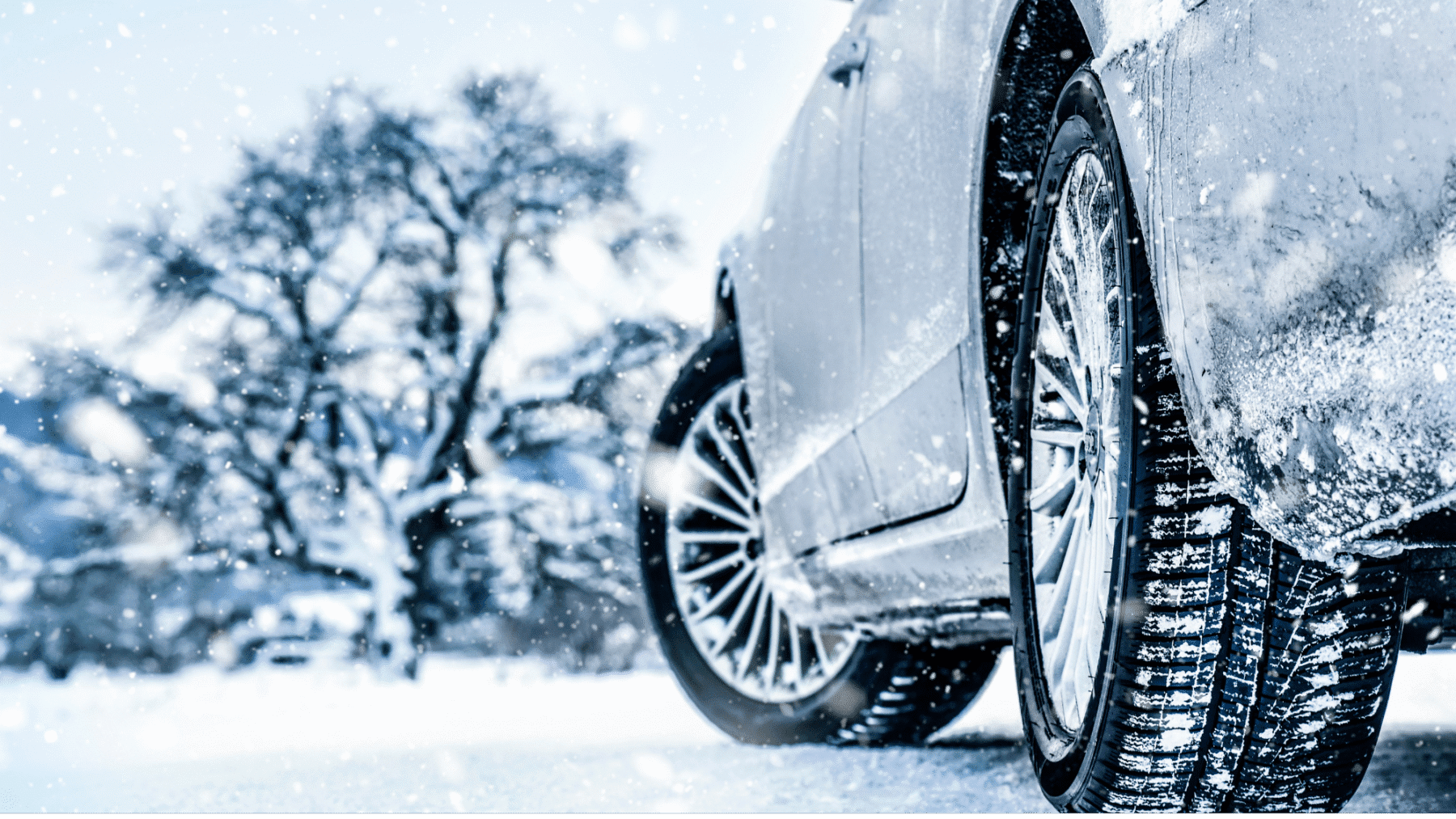Best Tires for Wilmette Winters: What Local Drivers Need to Know


Winters in Wilmette don’t just mean cold mornings—they bring heavy lake-effect snow, slushy side streets, and patches of black ice on Sheridan Road.
Driving in these conditions can be stressful. Snow, ice, and slush make every trip feel less predictable, no matter how short the drive.
That’s why having the right tires is so important. Good tires do more than get you from point A to point B—they keep your car steady, help you grip the road when it’s slippery, and give you the peace of mind you need through the winter season.
In this guide, you’ll find out the best tires for Wilmette winters, the right time to swap them, and tips to keep them running strong season after season.
Winter vs. All-Season vs. All-Weather: What’s Right for Wilmette?
Choosing the right tire type is the foundation of safe winter driving. Here’s how winter, all-season, and all-weather options compare for local conditions.
Winter Tires: Maximum Cold-Weather Grip
Winter (or snow) tires are engineered with softer rubber that stays flexible below freezing and deep tread patterns designed to bite into snow and ice. They deliver shorter braking distances and stronger traction compared to all-season tires, especially on Wilmette’s side streets after heavy snowfalls.
Always install four for balanced handling.
All-Weather Tires (3-Peak Mountain Snowflake)
All-weather tires carry the 3-Peak Mountain Snowflake (3PMSF) symbol, meaning they meet severe snow-traction standards. They’re a good option if you want one set of tires year-round, but they won’t match the stopping power of a true winter tire in deep snow or on slick ice.
Popular picks include the Michelin CrossClimate2 and Pirelli Cinturato WeatherActive, both strong in Chicago-area conditions.
All-Season Tires: A Compromise
All-season tires are fine when the weather’s mild, but once the temperature falls below 45°F, they don’t hold the road as well. And in Wilmette, that’s a big deal.
Winters here bring snow, ice, and plenty of slick mornings, and that’s exactly when you need tires that give you reliable traction.
Unfortunately, all-seasons tend to fall short when the conditions get rough.
Best Tires for Wilmette Winters (By Vehicle Type)
Not every vehicle needs the same tire. Sedans, SUVs, and drivers who prefer all-weather convenience each have different best-fit options.
Sedans & Crossovers
- Bridgestone Blizzak WS90: This tire has built a reputation as one of the most reliable options for winter driving. The tread is packed with tiny biting edges that grip into snow and ice, giving you steady traction when the roads get slick. Plus, its special rubber blend stays flexible even in freezing temperatures.
- Continental VikingContact 7: This European-designed winter tire is built to handle long, snowy seasons. Its tread channels push slush out of the way, while the flexible tread blocks hold steady on icy roads. On top of that, it gives you a quieter, more comfortable ride than many other options.
- Nokian Hakkapeliitta R5: The R5 is known worldwide as one of the top winter tire options—and for good reason. Its special “arctic grip” rubber compound and deep, siped tread blocks are designed to bite into ice and packed snow, giving you reliable control when the roads are at their worst. That’s why drivers in areas with long, harsh winters trust it to keep them safe and steady all season long.
SUVs & Light Trucks
- Michelin X-Ice Snow SUV: Designed specifically for heavier vehicles, this tire offers confident winter handling without sacrificing comfort. Its contact patch is optimized to distribute weight evenly, which is crucial for SUVs navigating uneven, icy streets. Plus, it holds up well against wear, so you’re not burning through tires too quickly.
- Bridgestone Blizzak DM-V2: The DM-V2 builds on Blizzak’s winter pedigree with deeper tread channels and specialized rubber compounds for SUVs and light trucks. It provides excellent snow-on-snow grip, which helps when pulling out of unplowed driveways or maneuvering through slush-filled parking lots.
All-Weather Alternatives
- Pirelli Cinturato WeatherActive: This new-generation all-weather tire combines year-round practicality with winter-ready performance. Its tread features high-density siping for snow and slush, while its reinforced shoulders keep the tire stable in heavy rain.
- Michelin CrossClimate2: A standout in the all-weather category, the CrossClimate2 has a V-shaped directional tread that excels in wet braking and resists hydroplaning. Its snowflake certification (3PMSF) means it’s legal for winter use and capable of handling snowy commutes. While it won’t quite match a Blizzak in deep snow, it’s the most versatile option for those who want one set of tires all year long.
Our Best Picks
- Best Value: Continental VikingContact 7
- Best Premium: Nokian Hakkapeliitta R5
- Best for SUVs/Trucks: Michelin X-Ice Snow SUV
- Most Versatile (All-Weather): Michelin CrossClimate2
When to Switch: The 45°F Rule
Timing your changeover is just as important as choosing the right tire. Use the 45°F guideline to avoid getting caught in Wilmette’s first snow.
Don’t wait for the first snowfall. Switch to winter tires when daytime highs consistently hover at 40–45°F.
In Wilmette, this typically means installing in mid-November and swapping back around mid-March. Booking your changeover early helps you avoid long waits once snow is in the forecast.
Tread Depth & Pressure
Even the best tires won’t perform if tread or pressure is off. Keep an eye on both to stay safe through Wilmette’s harshest months.
Tread Depth
While tires are legally “worn out” at 2/32″, winter traction starts to fade well before that. Replace your tires when they hit 4/32″ for safer performance in snow and slush. Use a quarter test at home: if part of Washington’s head is covered, you have enough tread.
Tire Pressure
For every 10°F drop in temperature, tire pressure falls by about 1 psi. Check your tires monthly during winter, ideally in the morning before driving. Proper inflation not only improves traction but also extends tire life.
Local Regulations: Studded Tires in Illinois
Before you buy new tires, it’s important to know what’s allowed in Illinois.
Illinois law prohibits most drivers from using studded winter tires. While these metal-studded designs are common in states with mountain passes and rural ice roads, Illinois bans them to protect paved roads from damage.
Here’s a breakdown of what you need to know:
- No studs for passenger vehicles: In Wilmette and the rest of Illinois, standard drivers may not use studded tires on cars, SUVs, or light trucks.
- Limited exceptions: Studded tires may be permitted for certain vehicles, like rural mail carriers or drivers with disability plates, but only in very specific conditions. For most residents, they are not an option.
- Road protection: The ban is designed to prevent road surface damage—metal studs can chip asphalt and concrete, especially on city streets and highways.
- Safer alternatives: Instead of studs, Illinois drivers are encouraged to use studless winter tires. These use advanced rubber compounds, micro-biting edges, and siping patterns that mimic stud-like grip without damaging roads.
- Look for the 3PMSF symbol: If you want one set of tires for year-round use, choose all-weather tires certified with the Three-Peak Mountain Snowflake (3PMSF). They’re legal in Illinois and provide tested snow traction.
Quick Checklist for Wilmette Drivers
A simple, no-frills guide to help you prepare for winter. Run through this list before the first cold snap to stay ready.
- Choose between dedicated winter tires or certified all-weather tires.
- Confirm size and load rating for your specific vehicle.
- Buy four tires, not just two, for balanced handling.
- Schedule installation before the first cold snap.
- Check tire pressure monthly and rotate on schedule.
- Have your alignment checked after hitting potholes.
Bottomline
Looking for the best tires for Wilmette winters can feel a little overwhelming at first. Between all the brands, sizes, and features, it’s easy to get lost.
The key is to focus on what matters most: safety, grip, and performance in cold, snowy conditions.
With the right tires, you’ll feel more confident on icy streets and better prepared for everything from slush to black ice. It’s all about making sure you and your family stay safe while getting around town.
At Heart Certified Auto Care, we make the process easier. We carry a wide selection of winter tires from trusted brands and back it up with expert advice. Whether you’re shopping online or stopping by in person, our team can help you find the perfect fit for your vehicle—at prices that make sense.







